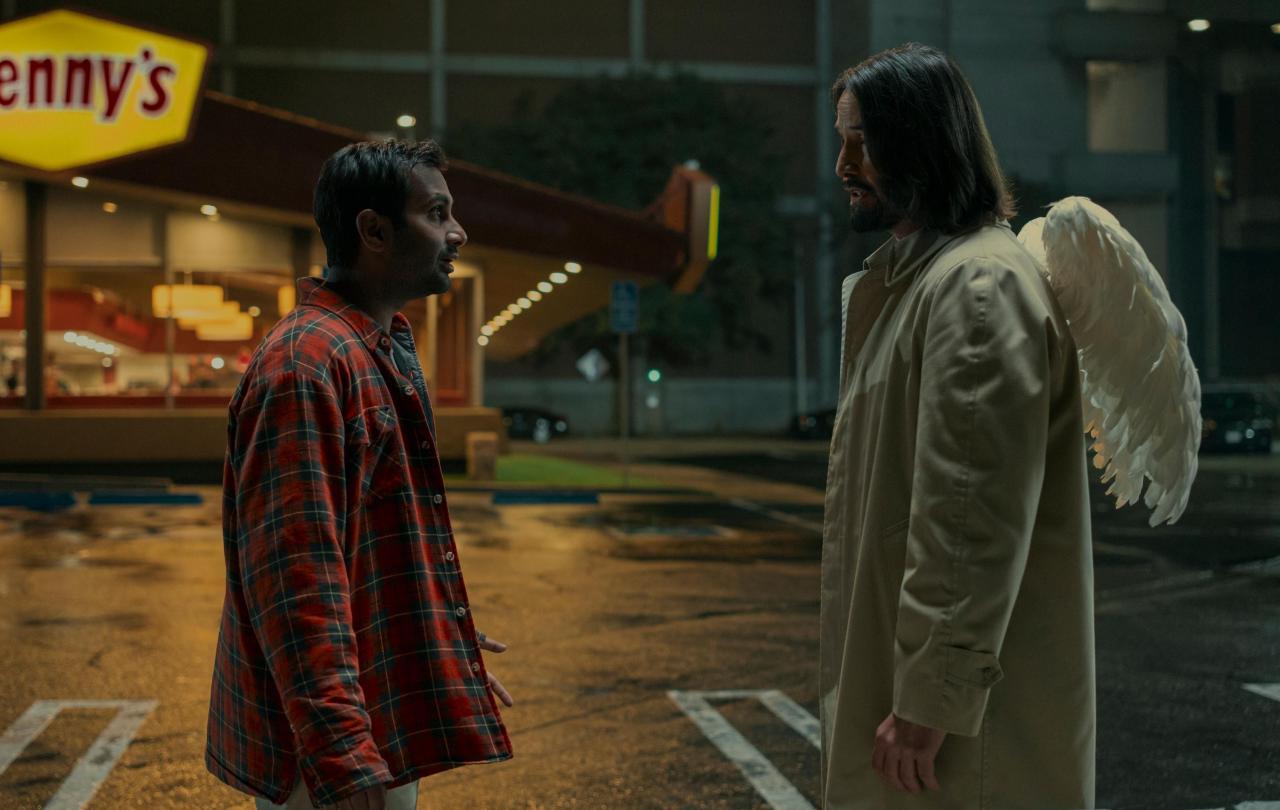
Good Fortune sees a well-meaning but rather inept angel named Gabriel meddle in the lives of a struggling gig worker and a wealthy venture capitalist, with unpredictable results.
The film follows Arj (Aziz Ansari), a frustrated documentary editor who is unable to get any steady employment and has been relegated to working in the gig economy, bowing and scraping to all app users for fear that they’ll give him a one-star review. Arj has resulted to sleeping in his car and is only one step away from being completely destitute. After a short trial period working as a personal assistant for bumbling millionaire Jeff (Seth Rogen) that ends badly, Arj reaches the end of his tether. Out of the blue, an angel named Gabriel (Keanu Reeves) appears to Arj, trying to show him that his life has meaning. In order to convince him, he swaps Arj’s life of poverty for Jeff’s of luxury in an attempt to show him that having money won't solve all his problems. But unfortunately for Gabriel, it does solve most of his problems, and Arj does not want to swap back.
Aziz Ansari writes and directs Good Fortune, making his directorial debut. Unfortunately, while this film may promise a lot, it sadly fails to deliver. The social commentary is on point, but the laughs are spaced very far apart. It manages to accurately diagnose the problems that society faces, namely that the gig economy created by big tech has taken us back to Victorian levels of economic uncertainty for many people. But the prognosis somehow seems to lack any punch when it’s finally delivered. Good Fortune feels like a mix of Trading Places, a cynical version of It’s a Wonderful Life, with a touch of the sitcom Superstore thrown in for good measure. It wears its influences on its sleeve, but never really coalesces into its own thing. The one area it does flex its muscles is the performances.
Ansari’s Arj voices the frustration of a generation when he says, "I did everything I was supposed to do and nothing's working out”. It is quite enjoyable when Gabriel asks him if he has learned that being rich and privileged isn’t all it’s cracked up to be, and Arj vehemently disagrees. Rather than learning any particular moral lesson, Arj has simply learned that it’s much nicer to be depressed in a mansion than in a hovel.
Seth Rogen has the hapless privileged idiot down to a science at this point; there’s something cathartic about him seeing how difficult it is for people trapped in the gig economy. “This is too hard,” he despairs, “How do people do this, without just being miserable and angry, all the time?”
Perhaps predictably, the stand-out performance is Keanu Reeves as Gabriel. Far from being a serenely wise archangel in this iteration, Gabriel is, by his own admission, a bit of a “dumb-dumb”. The film opens with Gabriel feeling frustrated in his current role, stopping people from texting and driving at the last possible moment. Gabriel feels desperate to change the course of someone’s life for the better. Gabriel’s meddling in Arj and Jeff’s lives is not looked on fondly by Martha, his superior (played by Sandra Oh). She makes Gabriel human as a punishment, sending him on a journey of self-discovery.
After the weighty self-importance of the John Wick franchise, it is thoroughly enjoyable to see Keanu shifting into comedy mode. His Gabriel has a touch of his Bill & Ted performance, making him a naïve idiot who lights up the screen every time he’s on it. Seeing him enjoy tacos, milkshakes and ‘chicken nuggies’, simple pleasures that are so easily taken for granted, brings some much-needed levity to a script that doesn’t always manage to rise.
In a sense, Good Fortune writes itself into a corner and can’t quite figure out how to get out of it. It feels like there’s a lot of time floundering around for an answer, which is frustrating, even at a brisk run time of 98 minutes. If there is any area that feels under-served it’s the sub-plot with Elena (played by singer and actress Keke Palmer). Serving as the love-interest for Arj, Elena seems to be the only one clear-eyed enough to see that systemic oppression requires an organised response, and is in the halting process of forming a union. Elena is the only one able to talk any sense into Arj when she says: “I’d rather be back down there, trying to help more of us get up here”.
Support Seen & Unseen
Since Spring 2023, our readers have enjoyed over 1,500 articles. All for free.
This is made possible through the generosity of our amazing community of supporters.
If you enjoy Seen & Unseen, would you consider making a gift towards our work?
Do so by joining Behind The Seen. Alongside other benefits, you’ll receive an extra fortnightly email from me sharing my reading and reflections on the ideas that are shaping our times.
Graham Tomlin
Editor-in-Chief





